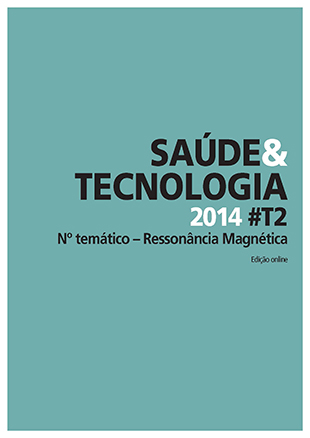Structural connectivity of the brain: differences between a normal brain and a brain with pathology
DOI:
https://doi.org/10.25758/set.1054Keywords:
Structural network, Structural connectivity, Diffusion tensor imaging, Connectivity matrices, Post-traumatic epilepsyAbstract
Understanding the large-scale structural network formed by neurons is a major challenge in neuroscience. In this study, we analyzed the structural connectivity of the human brain in 22 healthy subjects and in two patients with post-traumatic epilepsy. We evaluated the differences between these two groups. We also investigated differences in connectivity regarding gender and age in healthy individuals. For this purpose, we developed an analysis protocol using specialized software applications and we used graph theory metrics to characterize the structural connectivity between 118 different brain regions. Within the group of healthy subjects, we found that men in general are those with higher average values of graph theory metrics. However, there were no significant differences in gender regarding the global characterization of the brain. In addition, age was, in general, negatively correlated to the connectivity metrics. The brain regions where the most important differences were observed between healthy individuals and patients were: the Rolandic sulcus, the hippocampus, the pre-cuneus, the thalamus, and the cerebellum bilaterally. These differences were consistent with the radiologic images of patients and the studied literature on post-traumatic epilepsy. Developments are expected for the study of the structural connectivity of the human brain since its potential can be combined with other methods to characterize the disorders of brain circuits.
Downloads
References
Sporns O, Tononi G, Kottër R. The human connectome: a structural description of the human brain. PLoS Computat Biol. 2005;1(4):e42.
De Boer R, Schaap M, van der Lijn F, Vrooman HA, Groot M, van der Lugt A, et al. Statistical analysis of minimum cost path based structural brain connectivity. Neuroimage. 2011;55(2):557-65.
Achard S, Salvador R, Whitcher B, Suckling J, Bullmore E. A resilient, low-frequency, small-world human brain functional network with highly connected association cortical hubs. J Neurosci. 2006;26(1):63-72.
Stam CJ, Reijneveld JC. Graph theoretical analysis of complex networks in the brain. Nonlinear Biomed Phys. 2007;1(1):3.
Bullmore ET, Bassett DS. Brain graphs: graphical models of the human brain connectome. Annu Rev Clin Psychol. 2011;7:133-40.
Bullmore E, Sporns O. Complex brain networks: graph theoretical analysis of structural and functional systems. Nat Rev Neurosci. 2009;10(3):186-98.
Rubinov M, Sporns O. Complex network measures of brain connectivity: uses and interpretations. Neuroimage. 2010;52(3):1059-69.
Iturria-Medina Y, Sotero RC, Canales-Rodríguez EJ, Alemán-Gómez Y, Melie-García L. Studying the human anatomical network via diffusion-weighted MRI and Graph Theory. Neuroimage. 2008;40(3):1064-76.
Rykhlevskaia E, Gratton G, Fabiani M. Combining structural and functional neuroimaging data for studying brain connectivity: a review. Psychophysiology. 2008;45(2):173-87.
Stam CJ, Jones BF, Nolte G, Breakspear M, Scheltens P. Small-world networks and functional connectivity in Alzheimer's disease. Cereb Cortex. 2007;17(1):92-9.
Bernstein MA, King KF, Zhou XJ. Handbook of MRI pulse sequences. Oxford: Academic Press; 2004. ISBN 9780120928613
Desposito M. Nipype: neuroimaging in python pipelines and interfaces: using diffusion toolkit for DTI analysis. 2010. Available from: http://nipy.sourceforge.net/nipype/users/examples/dtkdtitutorial.html
Wang R, Benner T, Sorensen AG, Wedeen VJ. Diffusion toolkit: a software package for diffusion imaging data processing and tractography. Proc Int Soc Magn Reson Med. 2007;15:3720.
Wang R, Wedeen V, Martinos A. TrackVis, 2006-2010. Massachusetts General Hospital. Available from: http://trackvis.org/
Smith SM, Jenkinson M, Woolrich MW, Beckmann CF, Behrens TE, Johansen-Berg H, et al. Advances in functional and structural MR image analysis and implementation as FSL. Neuroimage. 2004;23 Suppl 1:S208-19.
Maldjian J. WFU PickAtlas: user manual. The Functional MRI Laboratory, Wake Forest University School of Medicine; 2010. Available from: http://fmri.wfubmc.edu/downloads/WFUPickAtlasUserManual.pdf
Center for Cognitive Neuroscience. UCLA multimodal connectivity package: brain mapping. CCN; 2013. Available_from:_http://ccn.ucla.edu/wiki/index.php/UCLA_Multimodal_Connectivity_Package
Sardanelli F, Di Leo G. Biostatistics for radiologists. Milan: Springer; 2009. ISBN 978-8847011328
Morimoto K, Fahnestock M, Racine RJ. Kindling and status epilepticus models of epilepsy: rewiring the brain. Prog Neurobiol. 2004;73(1):1-60.
Downloads
Published
Issue
Section
License
Copyright (c) 2022 Saúde e Tecnologia

This work is licensed under a Creative Commons Attribution-NonCommercial-NoDerivatives 4.0 International License.
The journal Saúde & Tecnologia offers immediate free access to its content, following the principle that making scientific knowledge available to the public free of charge provides greater worldwide democratization of knowledge.
The journal Saúde & Tecnologia does not charge authors any submission or article processing charges (APC).
All content is licensed under a Creative Commons CC-BY-NC-ND license. Authors have the right to: reproduce their work in physical or digital form for personal, professional, or teaching use, but not for commercial use (including the sale of the right to access the article); deposit on their website, that of their institution or in a repository an exact copy in electronic format of the article published by Saúde & Tecnologia, provided that reference is made to its publication in Saúde & Tecnologia and its content (including symbols identifying the journal) is not altered; publish in a book of which they are authors or editors the total or partial content of the manuscript, provided that reference is made to its publication in Saúde & Tecnologia.







